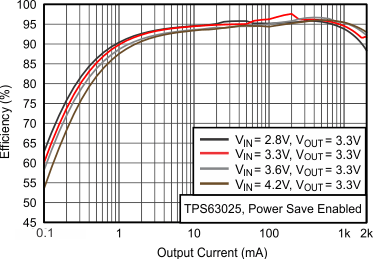The non-inverting, 4-switch buck-boost converter (TPS63xxx family) is an essential part of modern-day smart phones and tablets running from single-cell lithium batteries. Why is this so? Why is the buck-boost converter so important? What does a buck-boost converter actually do?
Fundamentally, a buck-boost converter uses 4 switches (MOSFETs) and 1 inductor to provide a regulated output voltage from an input voltage which varies above and below the desired output voltage. This is needed, for example, when taking a single-cell lithium battery (3-V to 4.2-V voltage range) and creating a 3.3-V rail. As opposed to a boost converter, which provides a regulated output voltage for only lower input voltages, or a buck converter, which provides a regulated output voltage for only higher input voltages, the buck-boost converter provides output voltage regulation for both conditions.
The main alternative to a buck-boost converter is using a two-stage conversion of the voltage—either a step-down followed by a step-up or a step-up followed by a step-down. This might be achieved by a step-down to 2.5V and then a boost to 3.3V or a boost to 5V and then a step-down to 3.3V. This approach is much less desirable as it takes up more space (two stages and two inductors are bigger than one) and it has a lower efficiency because the efficiency of each stage is multiplied together to get the total efficiency. The single inductor required and single stage conversion of the buck-boost saves space and increases efficiency. As shown in the figure at the top of this post, the efficiency is around 95% for most of the load current range and over 90% at full load.
The extremely small solution size and high efficiency demands of today’s smart and powerful electronics require buck-boost converters to generate the common 3.3-V rail. What are some of your requirements that a buck-boost converter fills?
Check out TI’s newest, smallest, and most efficient buck-boost converters: TPS63050 and TPS63025.

